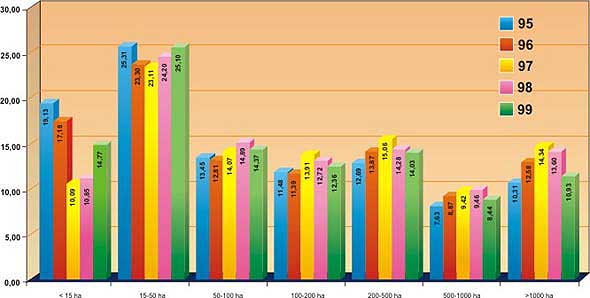|
Monitorando a Floresta Amazônica
|
.... |
Monitoring
the Brazilian Amazon Forest |
_____________________________________________________________________________
Figura 8 - Distribuição da taxa média do desflorestamento bruto (% /
ano)
* por classe de tamanho, de 1995 a 1999.
Figure 8 - Distribution of the mean rate of gross deforestation (%
/ year)
* by classes of size of increment, from 1995 until 1999.
|
 |
|
|
* Relativo à taxa média anual para a Amazônia.
|
Obs.: As classes não se referem a tamanho de propriedade,
mas a tamanho de desflorestamento.
Classes do not refer to
the size of the properties, but to the size of the deforested plots.
|
|
 |